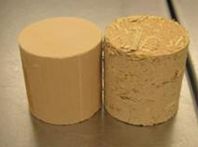Susceptibility of earth-based construction materials to fungal proliferation: laboratory and in situ assessment
DOI:
https://doi.org/10.21809/rilemtechlett.2018.69Keywords:
earthen bio-based building materials, fungal proliferation, in situ samplingAbstract
The impact of building materials on the environment and the health of occupants is nowadays a priority issue. Ecological construction materials such as earthen materials are currently experiencing a regain of interest due to both ecological and economic factors. The microbial proliferation on indoor materials can induce a deterioration of the building air quality and lead to an increase of health risks for the occupants. The issue of indoor air quality raises questions about the use of earthen building materials and their possible susceptibility to fungal development. The microflora of earthen materials and their ability to grow on such support are indeed poorly studied. This study focused on the quantification of both bacterial and fungal microflora along the manufacturing process. The impact of extreme humidity, simulating a hydric accident, on microflora development was analyzed on the surface and inside earthen bricks. The initial microflora of these materials was dramatically reduced during the manufacturing process, especially after heat treatment for drying. Proliferation of remaining microorganisms was only observed under high humidity condition, in particular for earthen materials with vegetal aggregates. Moreover, in situ samplings were performed on naturally dried earthen materials used in buildings. The characterization of the microbial density revealed a higher microbial density than on manufactured specimens, while microbial concentration and detected taxa seemed mainly related to the room use and building history. These results provide a better understanding of microbial proliferation on these materials.

Downloads
Published
How to Cite
Issue
Section
License
Authors retain copyright of the articles published in RILEM Technical Letters and grant the journal the right of first publication with open access. The work is simultaneously licensed under Creative Commons Attribution 4.0 International License (CC BY 4.0) that allows others to share and adapt the work under the following terms: 1) a proper attribution is given in a form of a reference to the original work's authorship and initial publication in RILEM Technical Letters (bibliographic record with the DOI link); 2) a link to the license is provided; 3) the changes (if any) are indicated.









